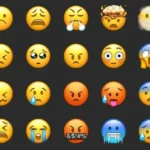
Welcome to the dynamic world of digital marketing, a landscape that has evolved significantly over the years, shaping the way businesses connect with their audiences in the digital realm. From the birth of the internet and the advent of online advertising to the rise of social media and the impact of transformative technologies, this journey through historical facts and key milestones unveils the fascinating tapestry of digital marketing. Join us as we explore pivotal moments, technological breakthroughs, and paradigm shifts that have defined the strategies and tactics employed by marketers in the digital age. From the early days of email campaigns to the exploration of the metaverse, each trivia provides a glimpse into the ever-changing and innovative landscape of digital marketing.
Birth of the Internet (1969): In 1969, the first flicker of the digital revolution occurred with the establishment of ARPANET, a research project of the United States Department of Defense. On October 29, 1969, Leonard Kleinrock, a computer scientist, and his team at UCLA sent the first-ever message over ARPANET to a computer at Stanford University. The message was intended to be “LOGIN,” but the system crashed after transmitting just two letters. This event marked the birth of the internet, laying the groundwork for the interconnected digital world we know today.
First Email Marketing Campaign (1978): In 1978, Gary Thuerk, a marketing manager at Digital Equipment Corporation (DEC), sent out the first mass email, widely recognized as the inaugural instance of email marketing. Thuerk’s message promoted DEC’s new line of computers and reached 393 recipients. Although it sparked controversy and earned him the title of the “Father of Spam,” this campaign set the stage for the evolution of email marketing as a powerful tool for direct communication with potential customers.
Launch of the World Wide Web (1991): The World Wide Web, as we know it today, was introduced by Sir Tim Berners-Lee in 1991. Working at CERN (European Organization for Nuclear Research), Berners-Lee developed the first web browser and editor, allowing users to navigate and create content on the web. This marked a pivotal moment, democratizing access to information and laying the foundation for the digital age. The creation of URLs, HTML, and HTTP protocols became the building blocks of websites and online content.
First Banner Ad (1994): On October 27, 1994, the digital advertising landscape changed forever with the launch of the first clickable banner ad on HotWired.com (now Wired.com). Created by the law firm Canter and Siegel, this ad invited users to click and explore their services. While simple by today’s standards, this banner ad was groundbreaking, ushering in the era of online advertising and opening new avenues for businesses to promote their products and services on the internet.
Google’s Foundation (1998): In 1998, Larry Page and Sergey Brin founded Google while they were Ph.D. students at Stanford University. Initially named “Backrub,” the search engine evolved into Google, becoming a dominant force in the digital landscape. Google’s search algorithm, emphasizing relevant results through PageRank, laid the groundwork for the company’s success. Over time, Google expanded its services beyond search, including the introduction of Google Ads (formerly AdWords) in 2000, revolutionizing online advertising.
AdWords Launch (2000): Google AdWords, launched on October 23, 2000, was a game-changer for online advertising. It allowed advertisers to bid on keywords and display text-based ads on Google’s search engine results pages (SERPs). This pay-per-click (PPC) advertising model provided businesses with a targeted and measurable way to reach their audience. AdWords played a pivotal role in Google’s revenue growth and became a key component of digital marketing strategies, offering unprecedented control and customization for advertisers.
Social Media Emergence (2003): The year 2003 witnessed the birth of two influential social media platforms: LinkedIn and MySpace. In May 2003, LinkedIn, founded by Reid Hoffman, focused on professional networking, connecting individuals in the business world. MySpace, launched in August 2003, marked the beginning of social networking on a larger scale, allowing users to connect, share content, and customize their profiles. These platforms set the stage for the social media revolution, shaping the way individuals and businesses interact online.
Facebook’s Launch (2004): Mark Zuckerberg, along with his co-founders, Dustin Moskovitz, Chris Hughes, and Eduardo Saverin, launched Facebook on February 4, 2004. Initially created for Harvard University students, the platform expanded to other universities and eventually the general public. Facebook’s user-friendly interface and focus on connecting people made it a social media giant. As the platform grew, so did its significance for digital marketing, offering businesses a powerful channel for advertising, brand building, and customer engagement.
YouTube Debut (2005): Steve Chen, Chad Hurley, and Jawed Karim founded YouTube in February 2005, forever changing the landscape of online video content. The platform allowed users to upload, share, and view videos, democratizing content creation. Google acquired YouTube in 2006, solidifying its place as the second-largest search engine globally. For digital marketers, YouTube became an invaluable platform for video marketing, enabling the creation of engaging content and providing businesses with a dynamic way to connect with their audience.
Twitter’s Introduction (2006): In March 2006, Jack Dorsey, Biz Stone, and Evan Williams launched Twitter, introducing the concept of microblogging to the world. Twitter’s unique 140-character limit per tweet encouraged concise and real-time communication. Over time, it evolved into a platform for news, trends, and conversations. For digital marketers, Twitter provided a direct line to audiences, enabling real-time engagement, customer support, and the amplification of brand messages through hashtags and trending topics. The platform’s influence on social media marketing is undeniable, fostering a culture of immediacy and brevity in online communication.
iPhone Release (2007): On June 29, 2007, Apple’s co-founder and then-CEO, Steve Jobs, unveiled the first iPhone, forever transforming the landscape of mobile technology. The iPhone was not only a revolutionary communication device but also a powerful platform for digital marketing. With the App Store’s introduction in 2008, businesses gained a new channel for reaching consumers through mobile apps, creating personalized and immersive brand experiences.
HubSpot’s Founding (2006): Brian Halligan and Dharmesh Shah founded HubSpot in 2006, pioneering the concept of inbound marketing. HubSpot’s integrated platform offered tools for content creation, social media marketing, lead generation, and analytics. The inbound methodology emphasized attracting, engaging, and delighting customers, challenging traditional outbound marketing. HubSpot’s impact on digital marketing was substantial, influencing a shift towards customer-centric and content-driven strategies.
Introduction of Google Analytics (2005): In November 2005, Google acquired Urchin Software and transformed it into Google Analytics. This free analytics tool provided website owners and marketers with valuable insights into website traffic, user behavior, and conversion data. Google Analytics became an indispensable asset for digital marketers, enabling data-driven decision-making, tracking campaign performance, and optimizing online strategies.
Instagram’s Launch (2010): Kevin Systrom and Mike Krieger launched Instagram in October 2010 as a photo-sharing app. Its visually appealing and user-friendly interface quickly gained popularity, attracting millions of users. Facebook’s acquisition of Instagram in 2012 further fueled its growth. For digital marketers, Instagram offered a unique platform for visual storytelling and brand promotion, with features like filters, Stories, and IGTV enhancing the possibilities for creative content.
Panda Algorithm Update (2011): In February 2011, Google introduced the Panda algorithm update, aimed at improving the quality of search results by penalizing low-quality and thin content. This update had a significant impact on search engine optimization (SEO) strategies, emphasizing the importance of high-quality, relevant content. Websites with poor content saw a decline in rankings, pushing marketers to prioritize content quality and user experience.
Content Marketing Rise (2012): The early 2010s saw a significant rise in the importance of content marketing. Brands shifted focus from traditional advertising to creating valuable, relevant, and consistent content to attract and retain a clearly defined audience. The rise of content marketing platforms, blogs, and social media as content distribution channels reshaped digital marketing strategies, placing storytelling and educational content at the forefront.
Mobilegeddon (2015): On April 21, 2015, Google launched a mobile-friendly algorithm update colloquially known as “Mobilegeddon.” This update aimed to prioritize mobile-friendly websites in mobile search results, reflecting the increasing importance of mobile optimization. Websites that were not mobile-friendly experienced a decline in mobile search rankings, emphasizing the need for responsive design and a seamless mobile user experience.
Introduction of Instagram Stories (2016): In August 2016, Instagram introduced Stories, a feature allowing users to share photos and videos that disappear after 24 hours. This move was a direct response to the popularity of Snapchat’s Stories. For digital marketers, Instagram Stories provided a dynamic and ephemeral way to engage audiences, fostering a sense of urgency and authenticity in brand communication.
GDPR Implementation (2018): On May 25, 2018, the General Data Protection Regulation (GDPR) came into effect in the European Union, influencing data privacy regulations globally. GDPR aimed to give individuals greater control over their personal data and how it is collected, processed, and stored. For digital marketers, this regulation necessitated a reevaluation of data handling practices, requiring transparency and user consent in data processing activities.
TikTok’s Global Expansion (2018): TikTok, a short-form video platform, was launched internationally in September 2017, and by 2018, it started gaining widespread popularity. The app, known for its user-generated content and viral challenges, quickly became a dominant force in social media. Marketers recognized the platform’s potential for reaching younger demographics, and TikTok’s advertising capabilities evolved, providing new opportunities for creative and engaging short-form video marketing strategies.
COVID-19 Impact (2020): The global COVID-19 pandemic, which emerged in late 2019 and escalated in 2020, had profound effects on digital marketing. With lockdowns and restrictions in place, there was a surge in online activities, accelerating the shift towards digital channels. E-commerce experienced unprecedented growth, and businesses rapidly adapted their marketing strategies to the changing consumer behavior. The pandemic underscored the importance of digital resilience and agility, prompting marketers to prioritize online presence and communication.
5G Rollout (2020s): The ongoing rollout of 5G technology in the 2020s has significant implications for digital marketing. With faster internet speeds and improved connectivity, 5G enhances the potential for immersive experiences, augmented reality (AR), and virtual reality (VR). Marketers are exploring new ways to leverage 5G capabilities for interactive content, live streaming, and personalized customer experiences, ushering in a new era of connectivity and engagement.
Voice Search Optimization (2020s): As voice-activated devices like smart speakers and virtual assistants gained popularity, optimizing content for voice search became a crucial aspect of digital marketing in the 2020s. The conversational nature of voice searches led marketers to adapt their SEO strategies to accommodate natural language queries. Understanding user intent and creating content that aligns with voice search trends became essential for maintaining visibility in search engine results.
Rise of Ephemeral Content (2020s): Ephemeral content, characterized by its temporary nature and short lifespan, gained prominence in the 2020s, largely popularized by platforms like Instagram Stories and Snapchat. Marketers embraced the trend, leveraging the sense of urgency and authenticity associated with ephemeral content. This format allows brands to connect with audiences in a more immediate and personal way, encouraging real-time engagement and storytelling.
Metaverse Exploration (2020s): The concept of the metaverse, a collective virtual shared space that integrates aspects of augmented reality, virtual reality, and the internet, gained traction in the 2020s. This evolving digital frontier presents new opportunities and challenges for digital marketing. Brands are exploring ways to establish a presence in the metaverse, considering the potential for immersive brand experiences, virtual events, and creative storytelling in a three-dimensional, digital environment. The metaverse represents a paradigm shift in the way marketers conceptualize and engage with their audiences.









